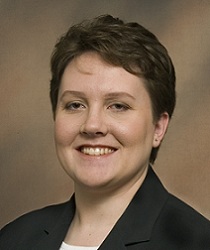 HIMSS Presenter on Wednesday the 26th
HIMSS Presenter on Wednesday the 26th
By Michelle Holmes MBA MHA, ECG Management Consultants, Inc.
Twitter: @MHolmesHIT
LinkedIn: Profile
To improve coordination and combat fragmented care, a 2006 ruling by the Centers for Medicare & Medicaid Services (CMS) and the U.S. Department of Health & Human Services’ Office of Inspector General (OIG) paved the way for hospitals to donate most of the cost of purchasing and maintaining electronic health record (EHR) systems. Many assumed that hospitals and health systems would extensively leverage this opportunity; after all, hospitals were seeking to align more closely with community physicians, and physicians were trying to find ways to afford these expensive software solutions.
And yet, far fewer organizations took advantage of the provision than initially expected.
Experts emerged to help hospital executives understand what they could and could not include in the donation, what criteria could be used when selecting donation recipients, and how to establish donor costs and physician prices. Attorneys drafted contracted terms, addressing issues such as term and termination, service level agreements, data ownership and transferability, and conditions for participation. White papers, webinars, and conference speeches on the topic were plentiful in 2007 and 2008. And many hospitals across the country did take advantage of the option – but not nearly as many as the experts predicted in 2006, when we were busy reprinting our business cards with new titles like “EHR Donation Guru.”
There are several reasons why EHR donations were not as popular as anticipated. Some hospitals found that the price they charged was the same as or even higher than vendor prices, despite a maximum donation. Additionally, hospitals started focusing on acquiring practices and employing physicians, which meant less need for an EHR donation to be part of their physician alignment strategy. Finally, the EHR adoption rate by the small and medium-sized practices thought to benefit most from this arrangement was much slower than expected, especially prior to the introduction of the CMS EHR Incentive Programs; simply put, many community physicians were not yet interested in converting from paper charts.
So as the 2013 expiration date approached, hospitals, physicians, and the professional organizations representing them were not terribly vocal about calling for an extension – at least not in comparison to the pressures related to delaying Stage 2 of meaningful use or ICD-10, for example. Still, the proposed extension announced last April was well received, as were suggested amendments. Those same experts with the dusty and unused business cards from 2006 declared the amendments to the final rules a sure thing – which, in the end, they were, but not until the 11th hour on December 27, 2013, when CMS and OIG published the final rules to extend the expiration date for the protected donations with little modification to the changes proposed the previous spring.
As a result of the extension, the topic of EHR donations is once again relevant for organizations that are considering a new donation strategy as well as those that will continue on their existing path. For the former organizations, they can learn from the experiences that others have accumulated over the past 8 years, because no matter how you look at it, this is not a simple path or one without considerable risks (including significant fines and even prison). And those hospitals and physicians participating in fully implemented donation arrangements must now understand and react to the changes that were introduced in the recently published final rules.
Michelle’s HIMSS Presentation
When: February 26 from 10:00 AM – 11:00 AM ET
Where: Room 224E
Presentation: “Using Stark/Anti-Kickback To Support Hospital/Physician IT Alignment Strategies.”
About the author: Michelle is a Principal at ECG Management Consultants, Inc. (@ECGMC ) where she joined in 2005. She focuses on helping physician groups leverage their EHRs to address strategic and operational challenges. She is committed to inspiring her clients and challenging their vendors to use their EHRs to optimize overall organizational performance.
